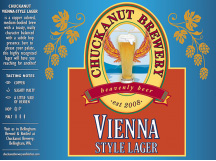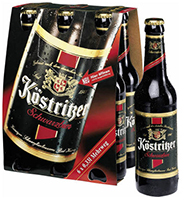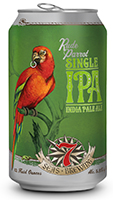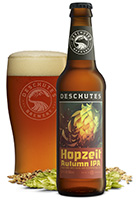Barley is the major grain used in beer making. Malting is the process of preparing the barley for brewing. Barley that has been malted is referred to as “malt.” The basis for nearly every beer recipe, base malts compose the majority of the total grain bill. They are usually the source of most of the starch-bursting power in any recipe, due to their higher diastatic power. This provides them with the high levels of enzymes needed to convert complex starches into fermentable sugars. As the bulk of the malt in any recipe, this also means that base malts are the primary contributor to the malt flavor of the finished beer. The most recognizable base malts are standard Pale and Pilsner malts, both produced from 2-row barley that’s kilned to a relatively low degree. Often misconstrued as specialty malts, both Vienna and Munich malts are also classified as base malts that can be used in the same manner as any other base malt, even as 100 percent of the grain bill. While occasionally compared to each other and even viewed as viable substitutes, Vienna and Munich malts are different in that they are kilned to different degrees, the former typically falling within a range of 3-5 °L while the latter is slightly darker at 5-10 °L. Used in paler styles such as Vienna lager, festbier and maibock, Vienna malt is generally described as adding a subtle malt sweetness and toasty character to beer. In comparison, Munich malt is known for imparting rich malty and bread crust flavors expected in styles like Märzen. Peaks and Pints offers a craft be flight to compare Vienna and Munich malts side-by-side: Craft Beer Crosscut 1.20.18: Flight of Vienna vs. Munich Malts.
 Chuckanut Vienna Lager
Chuckanut Vienna Lager
5.5% ABV, 22 IBU
Vienna lagers originated around Vienna in the mid-1800s, but its popularity faded until Austrian brewers who immigrated to Mexico created a following there. The Vienna lager is often closely associated with märzen and Oktoberfest styles, but historically the malt used for the Vienna was more highly kilned, leaving it with more light-roasted qualities. Chuckanut Brewery’s multiple award-winning Vienna Lager is brewed with half Vienna malts creating a delicate amber lager with a slightly caramelized and toasted malt character balanced by a subtle hop presence for hints of yeast, slight herbal, spice and grass hops, finishing sweet and slightly dry.
 Köstritzer Schwarzbier
Köstritzer Schwarzbier
4.8% ABV, 22 IBU
In April 1991, the Köstritzer Brauerei, a subsidiary of the Bitburger brewery, shed its 1543 wardrobe and emerged as of one of the most modern breweries in Thuringia, Germany. In September 1993, it re-introduced the “original Köstritzer black beer,” a traditional bottom-fermented lager with a medium body, creamy mouthfeel and flavor that is a beautifully complex blend of Munich malt, cocoa, vanilla and some hop bitterness. The roasted edge is mellow and humble, drinking like a Munich dunkel with a blackened accent. The finish is sweetish, the malty flavors lingering well into the next sip.
 7 Seas Rude Parrot IPA
7 Seas Rude Parrot IPA
5.9% ABV, 75 IBU
7 Seas Brewing’s Rude Parrot IPA has become one of the more reliable low ABV, well-balanced IPAs in the Northwest. Brewed with Vienna, light Crystal, and a touch of Honey malt, this golden hued IPA is aggressively hopped with Simcoe and Citra hops. Checks all the boxes you’d expect from an IPA with pine and citrus notes in both the smell and taste. Taste is rich and full with sharp orange rind and grapefruit followed by a minty coolness and an off dry, pleasantly bitter finish. It’s an everyday IPA, especially if a barbecue is present.
 Ayinger Celebrator Doppelbock
Ayinger Celebrator Doppelbock
6.7% ABV, 24 IBU
During Lent, as legend goes, German monks sustained themselves by sipping strong, dark lagers dubbed doppelbocks. This timeworn tale of liquid bread tends to overshadow an indisputable truth: Doppelbocks are fantastic feats of brewing engineering, no more so than Ayinger Celebrator. With accolades from the late Michael Jackson and a collection of gold medals from the World Beer Cup, this rich, toffee-rocked Munich malt lager is dark, crisp, with a touch of chocolate and grape notes. While presenting a full body, it’s not cloyingly sweet and features a wonderfully creamy body and enough alcohol to warm your palate.
 Deschutes Hopzeit Autumn IPA
Deschutes Hopzeit Autumn IPA
7% ABV, 60 IBU
Deschutes’ Hopzeit Autumn IPA find inspirations by the time-honored flavors of a Märzenbier in combination with Pilsner malt and both Vienna and Munich malts and Herkules, Sterling and Hull Melon hop varietals from Germany to deliver an herbal and balanced IPA that’s as at home at Peaks and Pints as a Munich biergarten.
